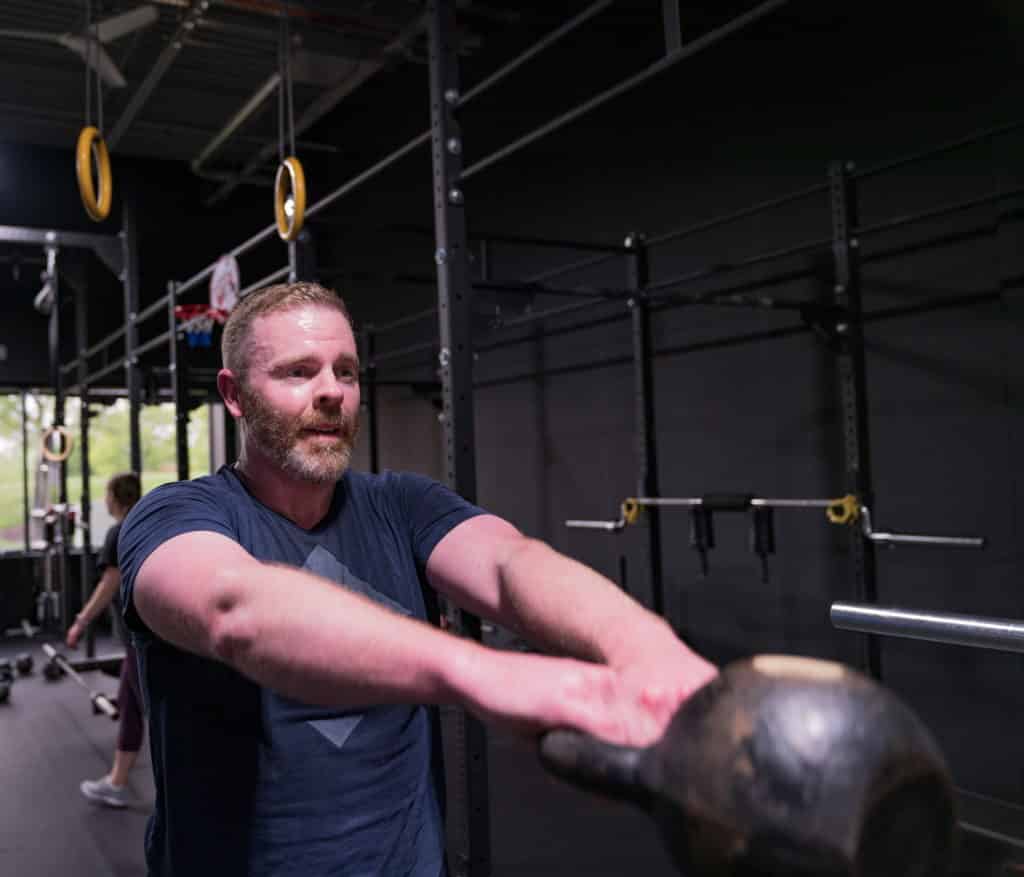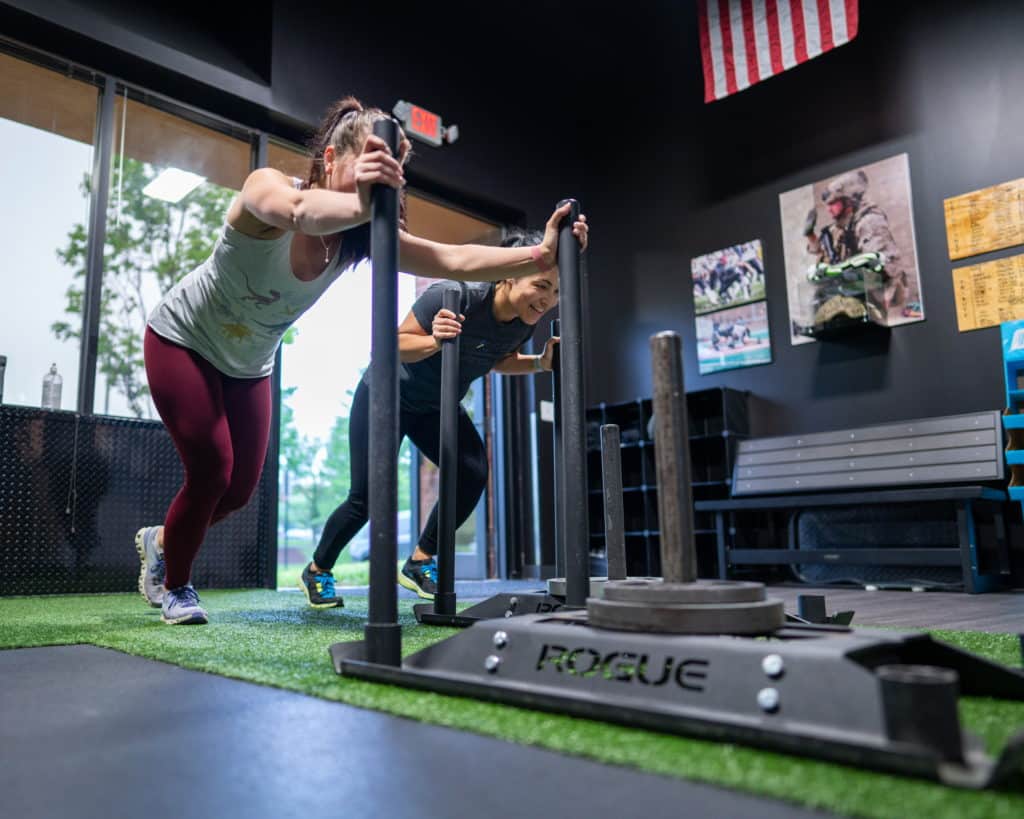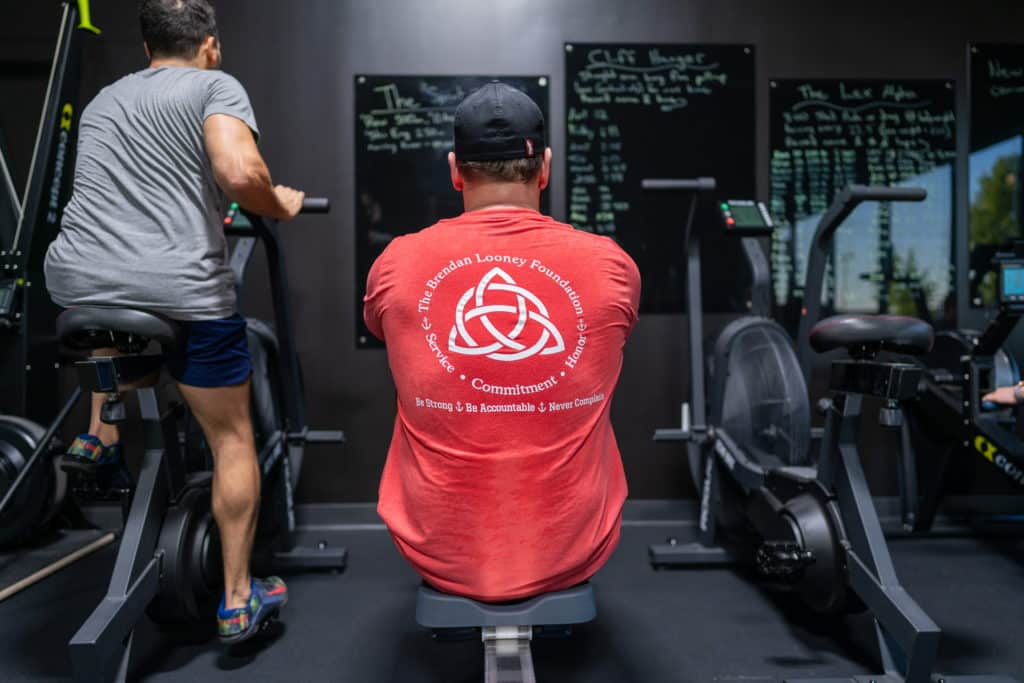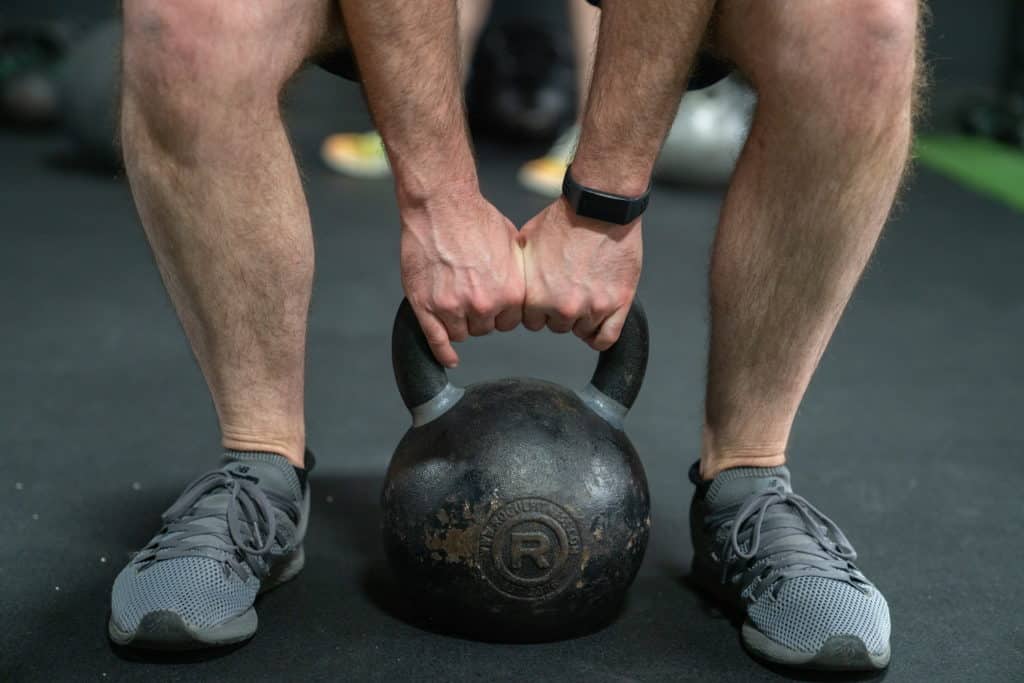July’s training program marks the start of Block 3. That means we’re making a small “shift in gears” to transition us from Blocks 1 and 2’s work capacity training to the heavier doses of strength and power training coming in Block 4. We’re also introducing a strength-training method yet unseen at Beyond Strength. Let’s break it down by training session…
Monday and Wednesday: Strength A and Strength B
We jumped a whole heck of a lot during Blocks 1 and 2. The combination of the power sections of Strength A and Strength B, plus the plyometrics during Endurance, added up to a lot of impacts. We’re cutting back on that in this training phase. (Although, you will do plyometric training during this block to maintain your hippity hopping abilities.)
Power work during Strength A is built on kettlebell swing and get-up practice. Each movement is low impact, and as you dang well know by now, we hold these two movements in high esteem. It’s because of what they produce–powerful, healthy hips and core, and a strong, mobile body. We’re prioritizing them at the beginning of the week so you’re fresh when you do them. For those of you who need to practice and build skills, your body and mind will be fresh to learn. If you have loads of swing and get-up skills, you’ll be fresh enough to hit them hard.

Swings are also a great primer for deadlifting. Doing them before heavy deadlifts prepares your body for the task of turning your body into a crane.
Strength B’s power training is straightforward. We’re doing a basic, bilateral jump progression and two simple medicine ball throws. We’re doing simple exercises to maintain our power output and to prime our bodies for lifting. Let’s talk about that lifting.
The results were clear during testing week–you guys got stronger. It was great to see so many PRs. During this phase, we’ll show you that you can do more with that strength.
Section B of Strength A and Strength B features eustress training. It’s a strength-training method developed and utilized by coaches like Craig Weller and Jonathan Pope at Building The Elite and Joel Jamieson (the guy that developed the Morpheus platform). Eustress training is designed to improve extensive strength, or the ability to express your strength over time and in higher volumes. That’s good. It trains for the transition between the gym and the real world by training you to use your strength lots of times–while also showing you that you can lift heavy weights more times than you believed. There’s another equally important purpose to eustress training, and it’s found in the name.
There are two types of stress: distress and eustress. Here’s a simple way to understand the difference–distress is stress that you’re not prepared for, and eustress is stress that you feel prepared for. The stress you experience in a given situation depends on how prepared you feel for that situation and how much control you perceive that you can exert in the situation. Eustress training is designed to improve your feelings of control in otherwise distressing situations. Here’s a description from an article I wrote for Free Range American:
“Eustress-training workouts are designed to improve your sense of control so that you feel challenged instead of anxious. They also train you to do a lot of quality work without making your body feel like it was lit on fire and put out with a pitchfork. The results: You’re able to push yourself harder with less demand on your body; your shift in mindset trains you to take on challenges rather than avoid them, and you improve your skill at your chosen exercises.”
The subtext in our website’s header reads: training to overcome any challenge. Well, to overcome any challenge you must feel as though you have the resources to take on the challenge. Eustress training builds the physical and mental resources for kicking challenges right in the pants.
We’ve kept movement restoration in section C of each strength workout. Rather than add more unnecessary strength training stress, we’re focusing on healthy joint range of motion and core strength.
Tuesday: Vigor
Vigor this month gives you a clear path for competing against yourself and your training buddies. That’s the main reason that we’re tracking distance, calories, and step-ups. We’re maintaining the same intervals throughout the month to make tracking easy. But also because we’ve hammered the threshold training volume over the past couple of blocks. So, this time we’re keeping the same amount of volume to maintain the training adaptations we built during the first half of the year, rather than continuing to pile on the higher threshold aerobic training.

The exercises are also on point with the low-impact theme. No jumping or hopping. Just continuous work on the cardio machines, the sled, the farmer’s carry, and the step-up box.
Thursday: Endurance
The main objective of this month’s Endurance class is 40 minutes of continuous work. The distances, the reps, and the different circuits are designed so that your body is moving in different ways. But we’re not getting hung up on how many circuits we do, our total distance on the machines, or any other such thing. The goal is to keep your heart rate in the endurance training zones, work, and maintain quality movement. This gives you many opportunities to practice moving well while improving your endurance.

Let’s go a little deeper with specifics.
We use the cardio equipment to get your heart rate up and into the endurance training zones. The equipment also makes it easier to maintain your heart rate once you get it up. We include mobility training for a couple of reasons. First, and just being honest here, to break up the monotony of the cardio machines. Staying on the machines for an entire workout kind of sucks. Second, we use them to improve our movement capacity. The more ways we challenge our joints to move at different, and increased, controlled ranges of motion, the better. Third, including them in the circuit teaches our body to move well at elevated heart rates.
Friday: Resilience
Programming from January to June was filled with gnarly Resilience workouts. We did a lot of high-volume, hard ass work. It’s time to take a little break from that ass-kicking.
This time around we are circuiting mobility exercises and carries with a relatively light strength exercise. Again, we’re doing this because need a break from all of the soul-crushing volume, but also to prep our bodies for the increased strength training volume and intensity on the docket for the fall.

The “light” strength training exercises are opportunities to practice our movement skills with each of the given exercises. The mobility exercises compile with all of the other movement capacity training we’re doing throughout the week. And the carries keep our body under tension, helping us maintain our muscle mass while also building core strength and resilience. The result is a productive training session that leaves your mind and your body feeling good at the end of it.
Okay. You know why you’re doing what you’re doing. Let’s kick ass this month.
